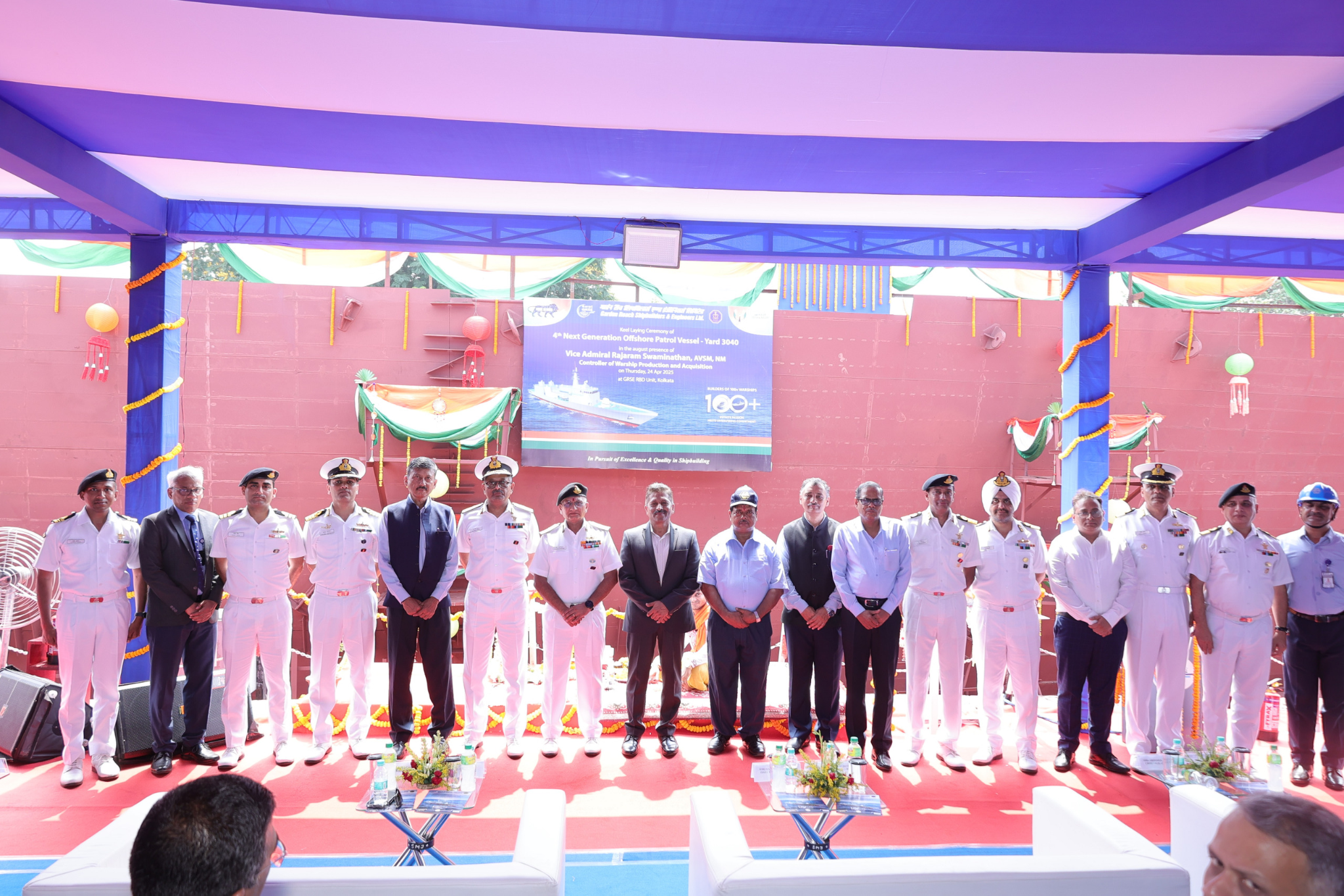NGOPV Yard 3040 | 28 Apr 2025
Why in News?
On 24 April 2025, Garden Reach Shipbuilders & Engineers Ltd (GRSE) in Kolkata hosted the keel laying ceremony for Yard 3040, the fourth Next Generation Offshore Patrol Vessel (ex-GRSE).
Key Points
- About NGOPVs:
- The Next Generation Offshore Patrol Vessels (NGOPVs) are designed with an approximate displacement of 3,000 tonnes, ensuring endurance and operational flexibility for diverse maritime missions.
- These vessels are intended to perform multiple roles, including:
- Coastal defence and surveillance.
- Search and Rescue (SAR) operations.
- Protection of offshore assets such as oil rigs, platforms, and installations
- Anti-piracy missions within India's Exclusive Economic Zone (EEZ) and in international waters.
- NGOPVs will be equipped with state-of-the-art sensors, surveillance systems, and modern weaponry, significantly enhancing the Indian Navy’s maritime domain awareness and its capabilities in low-intensity maritime conflicts.
- The addition of these vessels will bolster India's efforts to secure its maritime interests and promote stability across the wider Indo-Pacific region.
- Background on NGOPV:
- The Indian Navy signed contracts for the indigenous design and construction of eleven NGOPVs on 30 March 2023 with Goa Shipyard Ltd (GSL), Goa, and Garden Reach Shipbuilders & Engineers Ltd (GRSE), Kolkata.
- Under the agreement, Lead Shipyard GSL will construct seven ships, while Follow Shipyard GRSE will build four ships.
- The NGOPVs, with an approximate displacement of 3,000 tonnes, are designed for a range of missions including Coastal Defence and Surveillance, Search and Rescue operations, Protection of Offshore Assets, and Anti-Piracy missions.
- The Indian Navy signed contracts for the indigenous design and construction of eleven NGOPVs on 30 March 2023 with Goa Shipyard Ltd (GSL), Goa, and Garden Reach Shipbuilders & Engineers Ltd (GRSE), Kolkata.
- Alignment with National Initiatives:
- The construction of the eleven NGOPVs aligns with India's vision of 'Aatmanirbhar Bharat' and 'Make in India,' and the project is set to significantly enhance the Indian Navy’s maritime capabilities.
Exclusive Economic Zone (EEZ)
- Each coastal State may claim an EEZ beyond and adjacent to its territorial sea that extends seaward up to 200 nm from its baselines.
- Within its EEZ, a coastal state has:
- Sovereign rights for the purpose of exploring, exploiting, conserving and managing natural resources, whether living or nonliving, of the seabed and subsoil.
- Rights to carry out activities like the production of energy from the water, currents and wind.
- Unlike the territorial sea and the contiguous zone, the EEZ only allows for the above-mentioned resource rights. It does not give a coastal state the right to prohibit or limit freedom of navigation or overflight, subject to very limited exceptions.
‘Make in India’ Initiative:
- About: The campaign was launched to facilitate investment, foster innovation, enhance skill development, protect intellectual property & build best-in-class manufacturing infrastructure.
- Objectives:
- Increase the growth rate of the manufacturing sector to 12-14% per annum.
- Create 100 million additional manufacturing jobs by 2022 (revised to 2025).
- Increase the manufacturing sector's contribution to GDP to 25% by 2025.
- Pillars of ‘Make in India’:
- New Processes: Recognized 'ease of doing business' as vital for entrepreneurship, implementing measures to improve the business environment for startups and established enterprises.
- New Infrastructure: The government prioritised developing industrial corridors and smart cities to create world-class infrastructure.
- It also enhanced innovation and research through streamlined registration systems and improved intellectual property rights (IPR) infrastructure.
- New Sectors: Foreign Direct Investment (FDI) was significantly opened up in various sectors including Defence Production, Insurance, Medical Devices, Construction, and Railway infrastructure.
- New Mindset: The government embraced a role as a facilitator rather than a regulator, partnering with industry to drive the country’s economic development.
- Make in India 2.0: The ongoing "Make in India 2.0" phase, encompassing 27 sectors, continues to propel the program forward, consolidating India’s role as a significant player in the global manufacturing arena.

